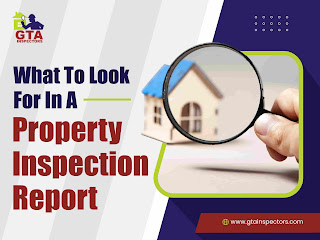The Top 5 Tips for Homeowners to Do Their Own Home Inspection
Are you ready to sell your property? You can inspect the property yourself.
It is important to inspect the property you plan to buy or sell. Although professional home inspections can be crucial, a preliminary inspection will help you identify any potential problems and save time and money.
This blog post will provide five DIY home inspection tips for homeowners. These inspection techniques can help you to pre-check your property before engaging a licensed home inspector .
1. Start with an Exterior Inspection
First impressions are important, and this is true for homes. Start your inspection by looking at the exterior of the home. Look for visible signs of damage such as cracked foundations, damaged siding or missing roof tiles. Be sure to check the windows, doors and the overall condition of the landscaping. Check for signs of improper drainage or water pooling around the foundation.
2. Check the Roof:
Rooftops are an integral part of any home and require regular maintenance. To inspect the rooftop:
- Begin by inspecting it visually from the ground.
- Use your ladder to get a closer look at the roof (Caution: Only if you are comfortable and safe). Look out for signs such as sagging or shingles that have been damaged or missing. Also, excessive growth of moss or alga. Use your ladder to get a closer look at the roof. (Caution: only do this if it is safe and comfortable).
- Attention: Pay attention to the condition around skylights and vents. They can cause leaks.
3. Check your Plumbing and Electrical System:
It is important to thoroughly examine the electrical and plumbing systems of a house in order to ensure its safety and functionality. You can detect water leaks by smelling musty or noticing dampness in the pipes and fixtures. To ensure that the water pressure is correct, test all faucets and showers. Check for exposed wiring, faulty outlets or flickering light in electrical systems. Check the condition of your circuit breaker panel and make sure it is properly labeled.
4. Assess the Interior
After you have inspected the exterior of the house, it is time to assess the interior. Check to see if any gaps in the walls or ceilings indicate water damage or foundation problems. All doors and windows should be checked to make sure they are working correctly. Check for drafts. Examine the flooring for signs of damage or wear. Inspect the kitchen and bathroom for signs of leaks, faulty plumbing, or wear.
5. Check the HVAC System
It is important to have a properly working (HVAC system) for both your comfort and efficiency. Check the air filters, and clean or replace them as necessary. By adjusting the thermostat, and listening to any unusual sounds or vibrations, test the HVAC system. Inspect the ductwork to check for signs of damage or leaks. Check the condition of your water heater and make sure it's in working order.
DIY Property inspection Can provide valuable insight into the condition of a property and help you to make an informed choice. These tips can be helpful in a preliminary assessment. However, a professional home inspection is necessary for a thorough evaluation.
Follow these five DIY home inspection guidelines to help you identify issues and make informed decisions when purchasing a house. Spending a little more time on the inspection will save you money and ensure a smooth experience as a homeowner.
If you need help identifying a problem or require guidance, please contact us. We are GTA Inspectors snagging company Dubai We have a team of dynamic inspection specialists that help buyers and sellers make informed decisions.


Comments
Post a Comment